Opinion & Analysis
Behind the numbers: A road map for an 18 handicap to get down to a 9
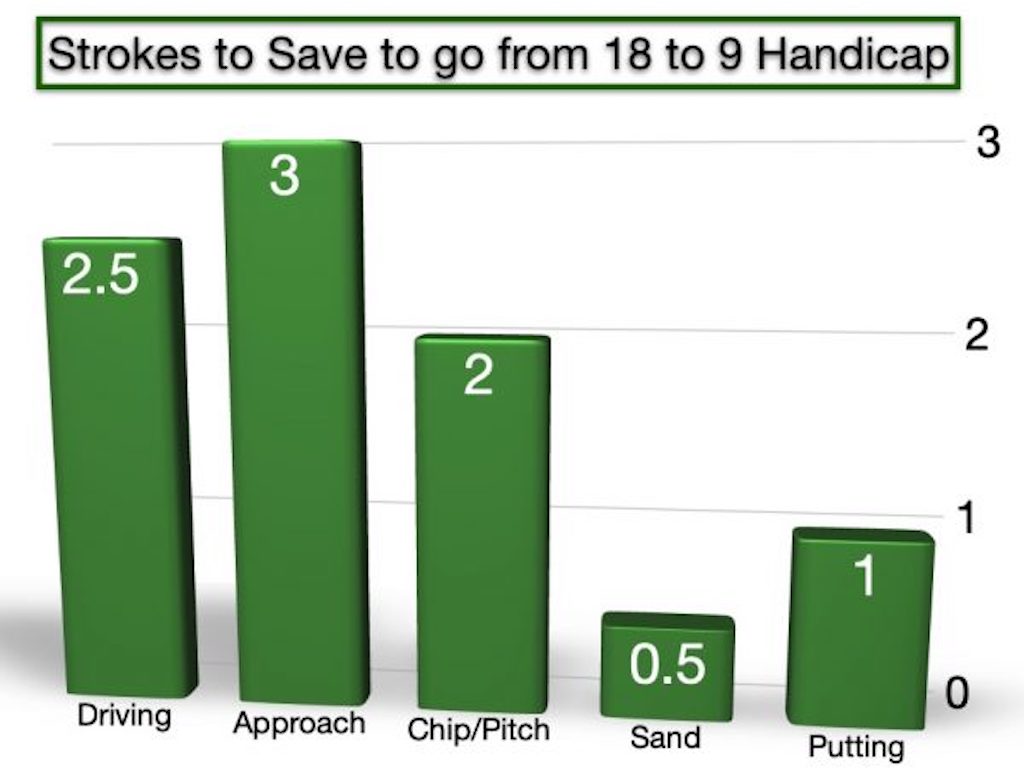
I wrote an article four years ago for GolfWRX called “The statistical differences between a scratch golfer and a PGA Tour player.” This article became one of the most-viewed features for the site, totaling over 420,000 views to date. I recently consulted with Ben Alberstadt, GolfWRX’s Editor-in-Chief, about pulling together some numbers for handicap levels to which more of us can relate.
You might ask: How do I know the differences between these handicap levels? Well, it is my full-time job to know about the numbers behind the game of golf—at all levels. I have been a student of the game from a statistical standpoint for 30-plus years. I created the strokes gained analysis website, ShotByShot.com, used by thousands of amateur golfers to improve by isolating the strengths and weaknesses of their games. Additionally, I work with PGA Tour players to extract clear answers from the Tour’s overwhelming 650-plus ShotLink stats.
I’ve learned that there is no such thing as an “average” game, no matter the handicap level. We’re all snowflakes and find our own unique way to shoot our number. With that said, ShotByShot.com’s 384,000-plus round database enables us to create a composite of the average golfer at each level. One of the beauties is that our data is robust and smooth across all five major facets so that any golfer’s strengths and weaknesses—and we all have them—stand out clearly by comparison.
The Data We Used
- 18 Handicap: I averaged the 3,551 rounds in our database that match the 18 Differential from Slope Adjusted Course Rating. In other words, the Best eight of 20 rounds when Mr. 18 actually played to an 18 handicap.
- 9 Handicap: Similarly, his Best eight out of 20 using the 5,000 applicable rounds in our database.
As you might guess, the difference between these two in scores is nine strokes. So, if your snowflake matches or is close to Mr. 18’s, simply drop the shots below by facet and voila you are there.
The chart below shows the distribution of the strokes by facet that Mr. 18 needs to save to join Mr. 9.
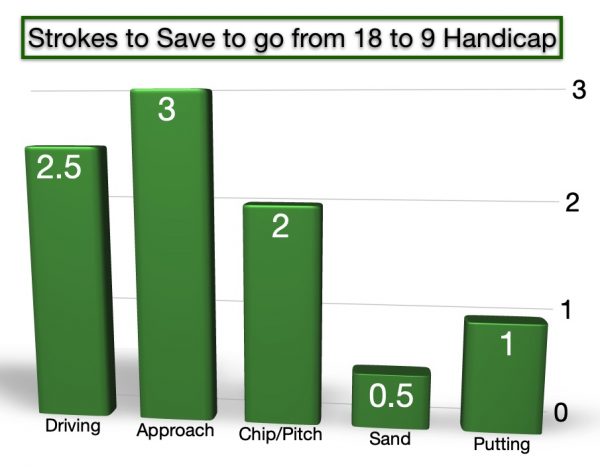
Driving
Skill in this critical facet of the game is measured by distance and accuracy. But let’s take distance out of the equation by assuming we’re all playing the correct tees for our games and focus on accuracy.
As the chart above indicates, we are looking for 2.5 strokes on, what for a typical golf course, is 14 driving holes. The chart below shows results in the average round for Mr. 18 and Mr. 9. Note that both make at least one Driving Error* per round. Weed out that error and you can be more than halfway home, especially if it is a Penalty Error** that tends to carry a cost of between 1.3 strokes (penalty with drop) and two-plus strokes (stroke and distance).
*No Shot Driving Errors = Balls hit out of play that cannot return to normal play with an advancement shot.
**Penalty Error = a. Stroke with drop, or b. Stroke and distance.
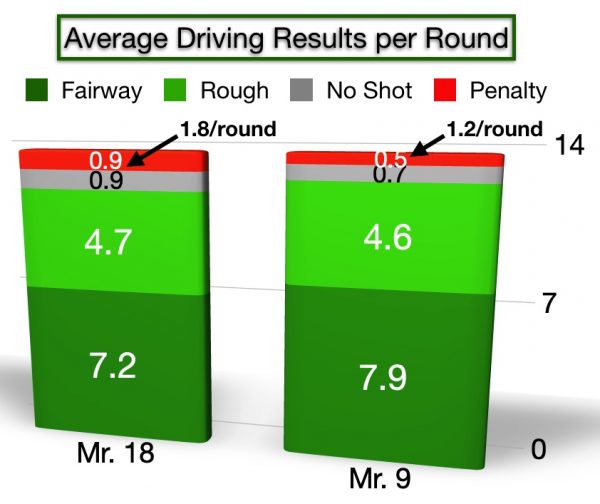
This may be easier said than done, but sometimes the fix is as simple as target and club selection from the tee. Sure, it works to aim away from trouble but try choosing a club that cannot reach the trouble. Most holes that feature trouble off the tee will also be stroke holes, even for Mr. 9. Avoid the error and take double-bogey out of play. This is also a valuable strategy for match play situations.
Next, strive to hit at least one more fairway. The approach accuracy charts below show how many more greens are hit from the fairway vs. rough.
Approach Shots
Here we need to save 3 strokes. This facet involves the greatest number of long game opportunities–on average 17.6 full swing attempts per round. These attempts are generally split 70 percent from the fairway and 30 percent from the rough. Let’s ignore the sand for now as it accounts for approximately only 1 shot every three-plus rounds. Except to say that when you find yourself in a fairway bunker, it is usually a mistake, so take your medicine, get back in play and avoid doubling the pain.
So where to save three strokes? Avoid penalties and that’s at least one stroke. Then hit three more greens in regulation and you’re there–Mr. 18 averages five GIRs vs. Mr. 9’s eight. The key is to improve accuracy.
I recommend working on the distance ranges circled in the charts below and devoting 70 percent of your work to fairway shots. From distances longer than the circled ranges, make smart choices, play within your capabilities and avoid errors and penalties. Easy?! At either handicap level, from long-range you’ll miss more greens than you hit. Knowing this, work toward “good misses” – the fat side of the green, short but in the fairway, etc. Finally, my data supports that hitting the green is far more important than worrying about “proximity to the hole”. But that’s another article.
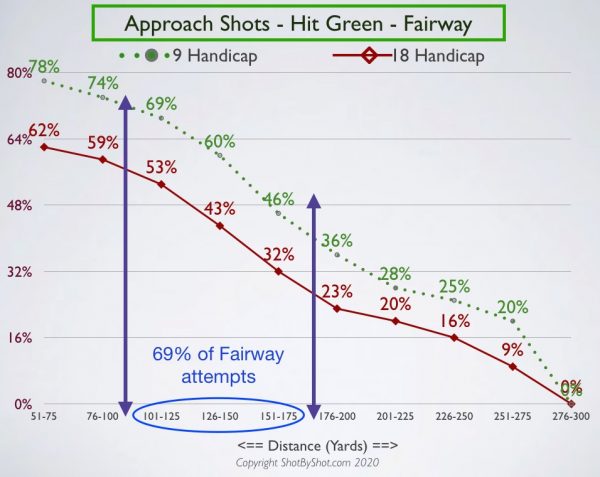
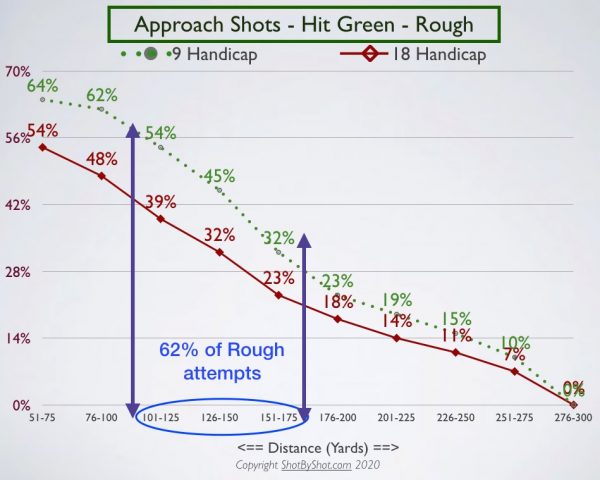
Chip/Pitch Shots (within 50 yards of the hole)
Here we are looking to save 2 strokes in a less frequently used part of the game–ten shots per round for Mr. 18 vs. eight shots for Mr. 9. Again, please start with avoiding Errors*. My pro and mentor spent hours on the short game with me. First, valuable technique instruction and then competitions @ $1.00 per shot—best lessons ever! His method was to break the shot opportunities into three categories, and this goes for the Sand game as well. Try it—it works.
- Green light: Good lie, no trouble–try to hole it
- Yellow light: Difficult but doable–play conservatively and try to be left with an uphill, makeable putt.
- Red light: Very difficult with looming downside–just get the ball on the green and avoid the error.
Next, practice the type of shots that you face the most and especially those that tend to give you problems. Bottom line, hit more shots closer to the hole and avoid costly errors. While this sounds like annoyingly obvious advice, maybe it will help to consider that Mr. 18 saves 20 percent of these opportunities vs. 32 percent for Mr. 9.
*Short Game Errors: The shot misses the green AND requires 4 or more strokes to hole out.
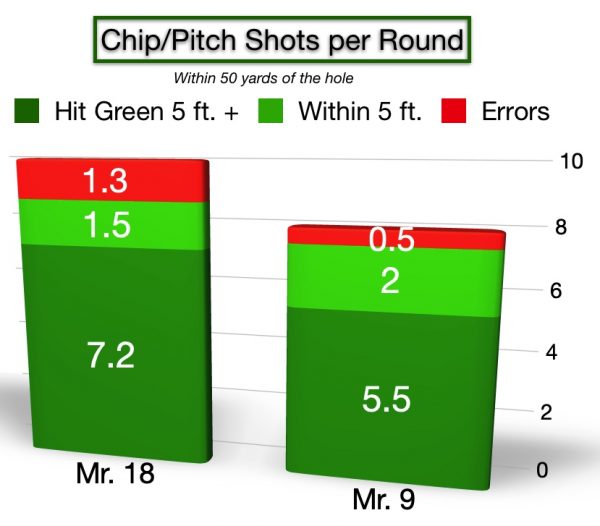
Sand Shots (within 50 yards of the hole)
Here we are looking to save half a shot in a very small part of the game—just 2 and 1.6 shots per round respectively for Mr. 18 and Mr. 9. I view this an underrated skill that definitely produces more errors per attempt than any other part of the game. When I was learning the game, I was afraid of the gaping bunkers that surrounded and protected ALL of our 18 greens. It wasn’t until I worked hard to gain real confidence from the sand that the greens seemed larger and easier to hit. Again, avoid errors and you’ll solve this portion of the puzzle. Mr. 18 saves 12 percent of his sand opportunities (with 28 percent errors) vs. 21 percent saves for Mr. 9 (15 percent errors).
*Short Game Errors: The shot misses the green AND requires 4 or more strokes to hole out.
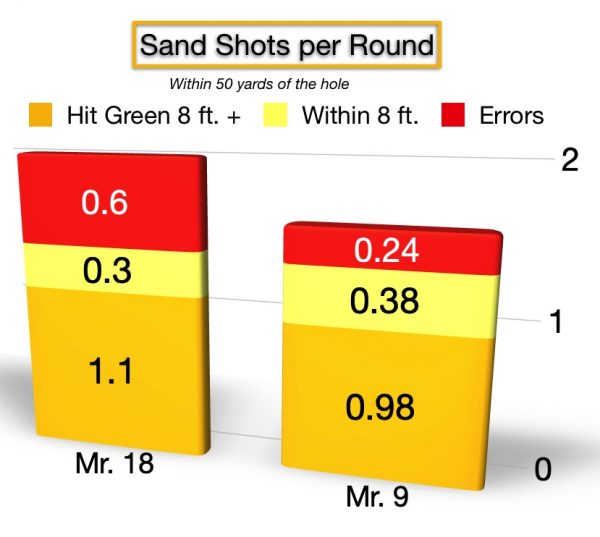
Putting
Putting is 40 percent of the game at all levels and we need to save 1 stroke. EASY, Mr. 18 simply needs to reduce his 3-putts from 2.5 per round to 1.5. Do this by working on distance control from 20 to 50 feet. Beyond 50 feet think of it as more of an easy chip shot with your putter. You’re doing well if you leave it within 10 percent of the original distance and below the hole. Finally, work on your short putts in the three-to-10-foot ranges. I recommend starting with three feet, then move to four to five feet. If you can get those ranges to Mr. 9’s one-putt numbers, you’re well on your way.
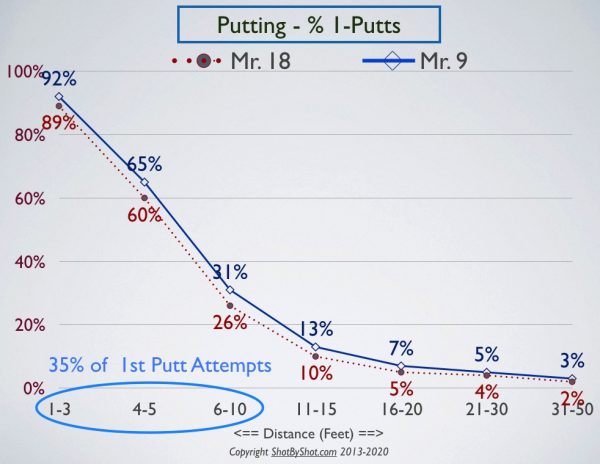
Conclusion
Bottom line, I have laid out where, on average, Mr. 18 needs to improve to make the leap to Mr. 9. If you made it this far, you may be saying, “Why all the focus on errors?” Simple! They are important! Most stat programs ignore them—the PGA Tour certainly does. My studies show that the relative frequency and severity of errors do more determine one’s scoring level than do all the good and average shots played.
Your game will no doubt have different areas of strength and weakness. The key is to accurately identify them so that you can address them appropriately. This article has hopefully given you some ideas about how to do that.
For a complete strokes gained analysis of your game, go to: www.ShotByShot.com
- LIKE443
- LEGIT48
- WOW14
- LOL8
- IDHT3
- FLOP2
- OB3
- SHANK11
Opinion & Analysis
The Wedge Guy: What really makes a wedge work? Part 1
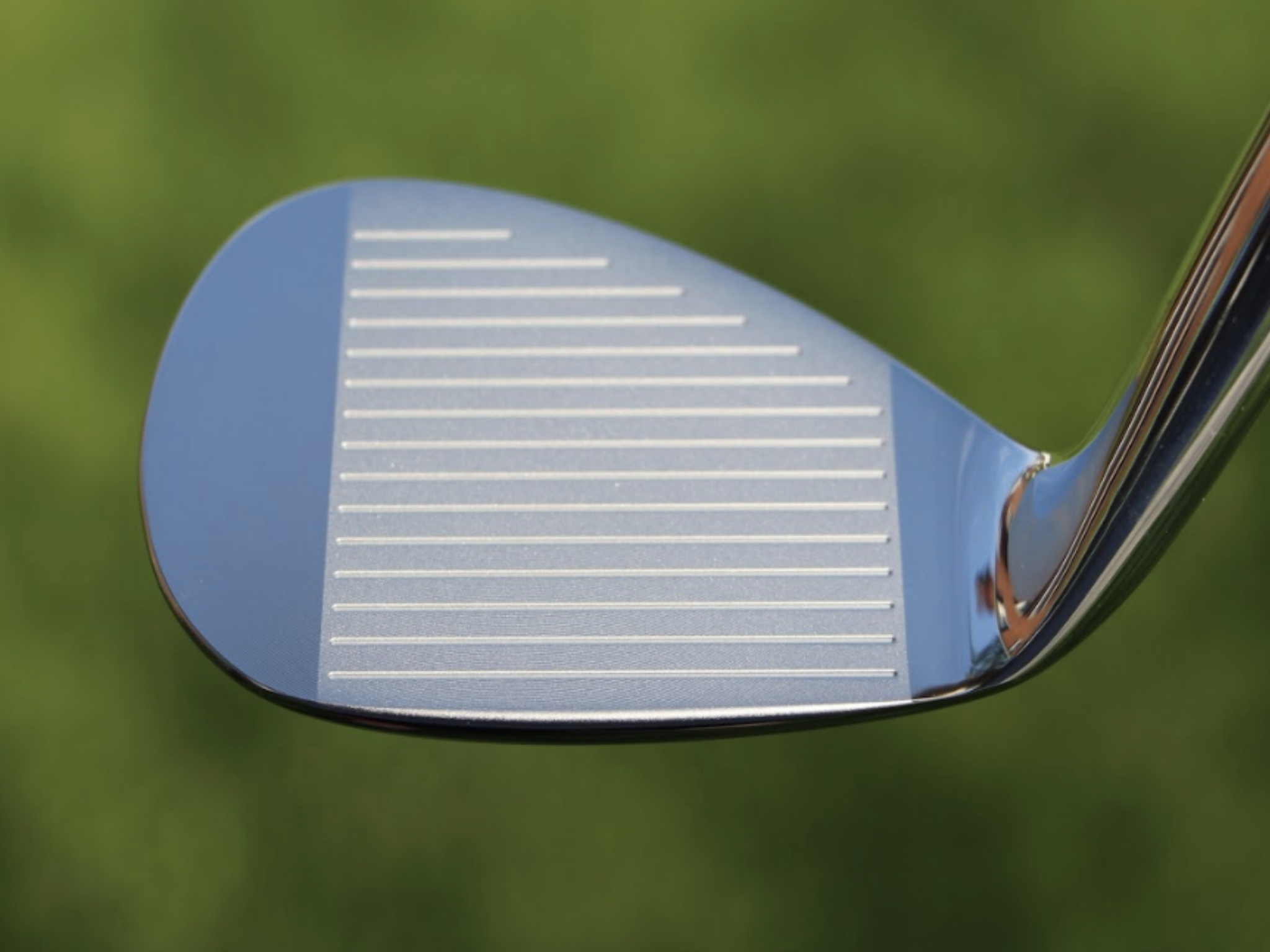
Of all the clubs in our bags, wedges are almost always the simplest in construction and, therefore, the easiest to analyze what might make one work differently from another if you know what to look for.
Wedges are a lot less mysterious than drivers, of course, as the major brands are working with a lot of “pixie dust” inside these modern marvels. That’s carrying over more to irons now, with so many new models featuring internal multi-material technologies, and almost all of them having a “badge” or insert in the back to allow more complex graphics while hiding the actual distribution of mass.
But when it comes to wedges, most on the market today are still single pieces of molded steel, either cast or forged into that shape. So, if you look closely at where the mass is distributed, it’s pretty clear how that wedge is going to perform.
To start, because of their wider soles, the majority of the mass of almost any wedge is along the bottom third of the clubhead. So, the best wedge shots are always those hit between the 2nd and 5th grooves so that more mass is directly behind that impact. Elite tour professionals practice incessantly to learn to do that consistently, wearing out a spot about the size of a penny right there. If impact moves higher than that, the face is dramatically thinner, so smash factor is compromised significantly, which reduces the overall distance the ball will fly.
Every one of us, tour players included, knows that maddening shot that we feel a bit high on the face and it doesn’t go anywhere, it’s not your fault.
If your wedges show a wear pattern the size of a silver dollar, and centered above the 3rd or 4th groove, you are not getting anywhere near the same performance from shot to shot. Robot testing proves impact even two to three grooves higher in the face can cause distance loss of up to 35 to 55 feet with modern ‘tour design’ wedges.
In addition, as impact moves above the center of mass, the golf club principle of gear effect causes the ball to fly higher with less spin. Think of modern drivers for a minute. The “holy grail” of driving is high launch and low spin, and the driver engineers are pulling out all stops to get the mass as low in the clubhead as possible to optimize this combination.
Where is all the mass in your wedges? Low. So, disregarding the higher lofts, wedges “want” to launch the ball high with low spin – exactly the opposite of what good wedge play requires penetrating ball flight with high spin.
While almost all major brand wedges have begun putting a tiny bit more thickness in the top portion of the clubhead, conventional and modern ‘tour design’ wedges perform pretty much like they always have. Elite players learn to hit those crisp, spinny penetrating wedge shots by spending lots of practice time learning to consistently make contact low in the face.
So, what about grooves and face texture?
Grooves on any club can only do so much, and no one has any material advantage here. The USGA tightly defines what we manufacturers can do with grooves and face texture, and modern manufacturing techniques allow all of us to push those limits ever closer. And we all do. End of story.
Then there’s the topic of bounce and grinds, the most complex and confusing part of the wedge formula. Many top brands offer a complex array of sole configurations, all of them admittedly specialized to a particular kind of lie or turf conditions, and/or a particular divot pattern.
But if you don’t play the same turf all the time, and make the same size divot on every swing, how would you ever figure this out?
The only way is to take any wedge you are considering and play it a few rounds, hitting all the shots you face and observing the results. There’s simply no other way.
So, hopefully this will inspire a lively conversation in our comments section, and I’ll chime in to answer any questions you might have.
And next week, I’ll dive into the rest of the wedge formula. Yes, shafts, grips and specifications are essential, too.
- LIKE3
- LEGIT1
- WOW0
- LOL0
- IDHT0
- FLOP0
- OB0
- SHANK0
Golf's Perfect Imperfections
Golf’s Perfect Imperfections: Amazing Session with Performance Coach Savannah Meyer-Clement

In this week’s episode, we spent some time with performance coach Savannah Meyer-Clement who provides many useful insights that you’ll be able to implement on the golf course.
- LIKE0
- LEGIT0
- WOW0
- LOL0
- IDHT0
- FLOP0
- OB0
- SHANK0
19th Hole
Vincenzi’s 2024 RBC Heritage betting preview: Patrick Cantlay ready to get back inside winner’s circle
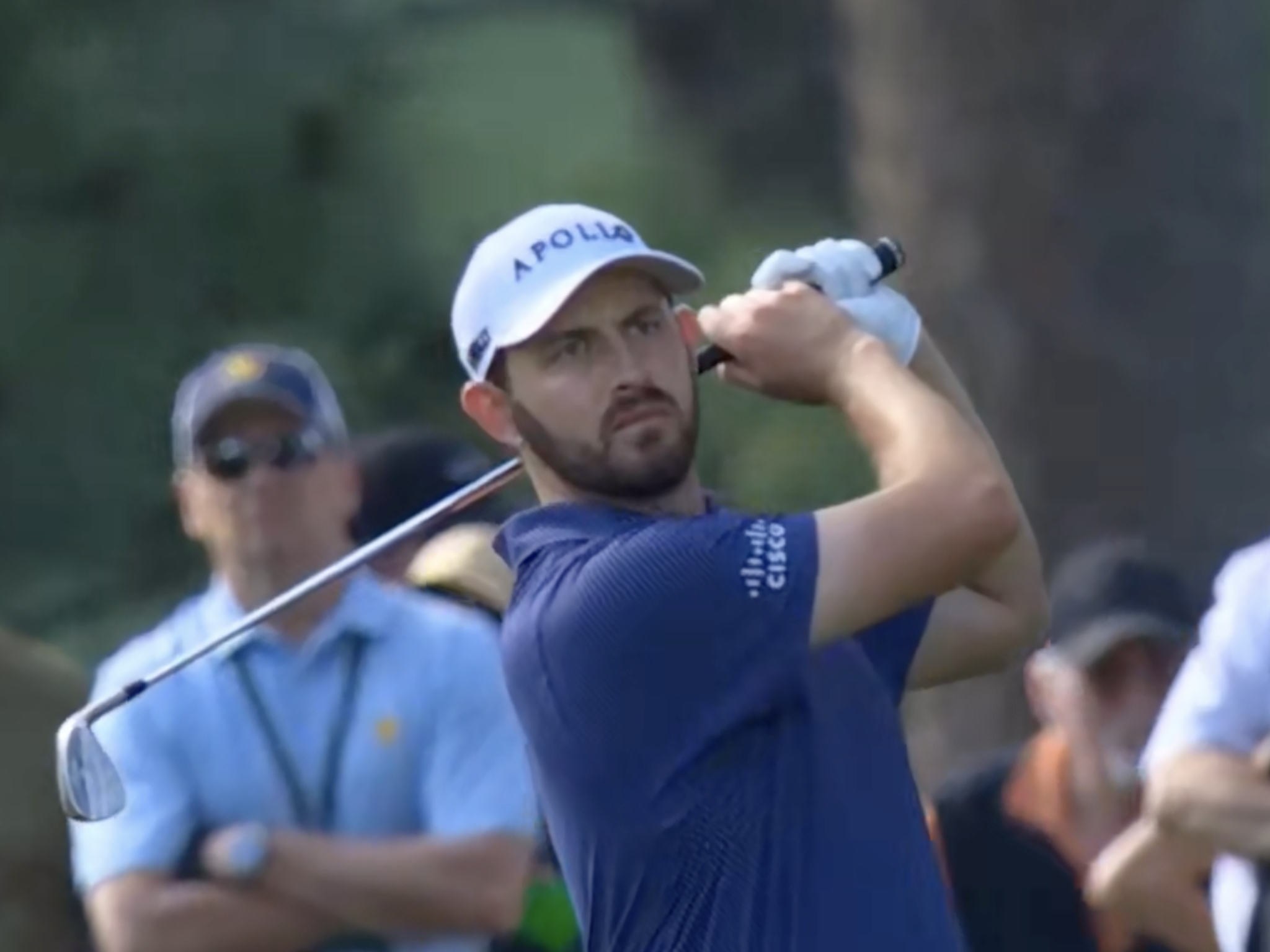
Just a two-hour drive from Augusta National, the PGA TOUR heads to Harbour Town Golf Links in Hilton Head Island, S.C. Hilton Head Island is a golfer’s paradise and Harbour Town is one of the most beautiful and scenic courses on the PGA TOUR.
Harbour Town Golf Links is a par-71 that measures 7,121 yards and features Bermuda grass greens. A Pete Dye design, the course is heavily tree lined and features small greens and many dog legs, protecting it from “bomb-and-gauge” type golfers.
The field is loaded this week with 69 golfers with no cut. Last year was quite possibly the best field in RBC Heritage history and the event this week is yet another designated event, meaning there is a $20 million prize pool.
Most of the big names on the PGA Tour will be in attendance this week with the exceptions of Hideki Matsuyama and Viktor Hovland. Additionally, Webb Simpson, Shane Lowry, Gary Woodland and Kevin Kisner have been granted sponsors exemptions.
Past Winners at Harbour Town
- 2023: Matt Fitzpatrick (-17)
- 2022: Jordan Spieth (-13)
- 2021: Stewart Cink (-19)
- 2020: Webb Simpson (-22)
- 2019: CT Pan (-12)
- 2018: Sotoshi Kodaira (-12)
- 2017: Wesley Bryan (-13)
- 2016: Branden Grace (-9)
- 2015: Jim Furyk (-18)
In this article and going forward, I’ll be using the Rabbit Hole by Betsperts Golf data engine to develop my custom model. If you want to build your own model or check out all of the detailed stats, you can sign up using promo code: MATTVIN for 25% off any subscription package (yearly is best value).
Key Stats For Harbour Town
Let’s take a look at key metrics for Harbour Town Golf Links to determine which golfers boast top marks in each category over their past 24 rounds.
Strokes Gained: Approach
Strokes Gained: Approach is exceedingly important this week. The greens at Harbour Town are about half the size of PGA TOUR average and feature the second-smallest greens on the tour. Typical of a Pete Dye design, golfers will pay the price for missed greens.
Total SG: Approach Over Past 24 Rounds
- Scottie Scheffler (+1.27)
- Tom Hoge (+1.27)
- Corey Conners (+1.16)
- Austin Eckroat (+0.95)
- Cameron Young (+0.93)
Good Drive %
The fairways at Harbour Town are tree lined and feature many dog legs. Bombers tend to struggle at the course because it forces layups and doesn’t allow long drivers to overpower it. Accuracy is far more important than power.
Good Drive % Over Past 24 Rounds
- Brice Garnett (88.8%)
- Shane Lowry (+87.2%)
- Akshay Bhatia (+86.0%)
- Si Woo Kim (+85.8%)
- Sepp Straka (+85.1%)
Strokes Gained: Total at Pete Dye Designs
Pete Dye specialists tend to play very well at Harbour Town. Si Woo Kim, Matt Kuchar, Jim Furyk and Webb Simpson are all Pete Dye specialists who have had great success here. It is likely we see some more specialists near the top of the leaderboard this week.
SG: TOT Pete Dye per round over past 36 rounds:
- Xander Schauffele (+2.27)
- Scottie Scheffler (+2.24)
- Ludvig Aberg (+2.11)
- Brian Harman (+1.89)
- Sungjae Im (+1.58)
4. Strokes Gained: Short Game (Bermuda)
Strokes Gained: Short Game factors in both around the green and putting. With many green-side bunkers and tricky green complexes, both statistics will be important. Past winners — such as Jim Furyk, Wes Bryan and Webb Simpson — highlight how crucial the short game skill set is around Harbour Town.
SG: SG Over Past 24 Rounds
- Jordan Spieth (+1.11)
- Taylor Moore (+1.02)
- Wyndham Clark (+0.98)
- Mackenzie Hughes (+0.86)
- Andrew Putnam (+0.83)
5. Greens in Regulation %
The recipe for success at Harbour Town Golf Links is hitting fairways and greens. Missing either will prove to be consequential — golfers must be in total control of the ball to win.
Greens in Regulation % over past 24 rounds:
- Brice Garnett (+75.0%)
- Scottie Scheffler (+69.9%)
- Corey Conners (+69.0%)
- Shane Lowry (+68.3%)
- Patrick Rodgers (+67.6%)
6. Course History
Harbour Town is a course where players who have strong past results at the course always tend to pop up.
Course History over past 24 rounds:
- Patrick Cantlay (+2.34)
- Cam Davis (+2.05)
- J.T. Poston (+1.69)
- Justin Rose (+1.68)
- Tommy Fleetwood (+1.59)
The RBC Heritage Model Rankings
Below, I’ve compiled overall model rankings using a combination of the five key statistical categories previously discussed — SG: Approach (24%), Good Drives (20%), SG: SG (14%), SG: Pete Dye (14%), GIR (14%), and Course History (14%)
- Shane Lowry
- Russell Henley
- Scottie Scheffler
- Xander Schauffele
- Corey Conners
- Wyndham Clark
- Christiaan Bezuidenhout
- Matt Fitzpatrick
- Cameron Young
- Ludvig Aberg
2024 RBC Heritage Picks
Patrick Cantlay +2000 (FanDuel)
With the exception of Scottie Scheffler, the PGA Tour has yet to have any of their star players show peak form during the 2024 season. Last week, Patrick Cantlay, who I believe is a top-5 players on the PGA Tour, took one step closer to regaining the form that’s helped him win eight events on Tour since 2017.
Cantlay limped into the Masters in poor form, but figured it out at Augusta National, finishing in a tie for 20th and ranking 17th for the week in Strokes Gained: Ball Striking. The former FedEx Cup champion will now head to one of his favorite golf courses in Harbour Town, where he’s had immaculate results over the years. In his six trips to the course, he’s only finished worse than 7th one time. The other finishes include three third places (2017, 2019, 2023) and one runner-up finish (2022). In his past 36 rounds at Harbour Town, Cantlay ranks 1st in Strokes Gained: Total per round at the course by a wide margin (+2.36).
Cantlay is winless since the 2022 BMW Championship, which is far too long for a player of his caliber. With signs pointing to the 32-year-old returning to form, a “signature event” at Harbour Town is just what he needs to get back on the winning track.
Tommy Fleetwood +3000 (FanDuel)
I truly believe Tommy Fleetwood will figure out a way to win on American soil in 2024. It’s certainly been a bugaboo for him throughout his career, but he is simply too talented to go another season without winning a PGA Tour event.
At last week’s Masters Tournament, Fleetwood made a Sunday charge and ended up finishing T3 in the event, which was his best ever finish at The Masters. For the week, the Englishman ranked 8th in the field in Strokes Gained: Approach, 10th in Strokes Gained: Ball Striking and 16th in Strokes Gained: Putting.
Harbour Town is a perfect layout for Fleetwood, and he’s had relative success at this Pete Dye design in the past. In his four trips to the course, he’s finished inside of the top 25 three times, with his best finish, T10, coming in 2022. The course is pretty short and can’t be overpowered, which gives an advantage to more accurate players such as Fleetwood. Tommy ranks 8th in the field in Good Drive % and should be able to plot his way along this golf course.
The win is coming for Tommy lad. I believe there’s a chance this treasure of a golf course may be the perfect one for him to finally break through on Tour.
Cameron Young +3300 (FanDuel)
Cameron Young had a solid Masters Tournament last week, which is exactly what I’m looking for in players who I anticipate playing well this week at the RBC Heritage. He finished in a tie for 9th, but never felt the pressure of contending in the event. For the week, Young ranked 6th in Strokes Gained: Off the Tee and 6th in Strokes Gained: Ball Striking.
Despite being one of the longest players off the tee on the PGA Tour, Young has actually played some really good golf on shorter tracks. He finished T3 at Harbour Town in 2023 and ranks 20th in the field in Good Drive% and 16th in Greens in Regulation in his past 24 rounds. He also has strong finishes at other shorter courses that can take driver out of a players hand such as Copperhead and PGA National.
Young is simply one of the best players on the PGA Tour in 2024, and I strongly believe has what it takes to win a PGA Tour event in the very near future.
Corey Conners +5500 (FanDuel)
Corey Conners has had a disappointing year thus far on the PGA Tour, but absolutely loves Harbour Town.
At last week’s Masters Tournament, the Canadian finished T30 but ranked 20th in the field in Strokes Gained: Approach. In his past 24 rounds, Conners ranks 3rd in the field in Strokes Gained: Approach, 3rd in Greens in Regulation % and 24th in Good Drive %.
In Conners’ last four trips to Harbour Town, his worst finish was T31, last season. He finished T4 in 2021, T12 in 2022 and ranks 8th in Strokes Gained: Total at the course over his past 36 rounds.
Conners hasn’t been contending, but his recent finishes have been encouraging as he has finished in the top-25 in each of his past three starts prior to The Masters, including an impressive T13 at The PLAYERS. His recent improvement in ball striking as well as his suitability for Harbour Town makes Conners a high upside bet this week.
Shane Lowry (+7500) (FanDuel)
When these odds were posted after Lowry was announced in the field, I have to admit I was pretty stunned. Despite not offering much win equity on the PGA Tour over the last handful of years, Shane Lowry is still a top caliber player who has the ability to rise to the top of a signature event.
Lowry struggled to score at The Masters last week, but he actually hit the ball really well. The Irishman ranked 1st for Strokes Gained: Approach on the week and 7th in Strokes Gained: Ball Striking. As usual, it was the putter that let him down, as he ranked 60th in the field in Strokes Gained: Putting.
Harbour Town is most definitely one of Lowry’s favorite courses on the PGA Tour. In his six starts there, he’s finished in the top 10 three times, including third twice. Lowry is sensational at Pete Dye designs and ranks 7th in Strokes Gained: Total in his past 36 rounds on Dye tracks.
Lowry is perfect for Harbour Town. In his past 24 rounds, he ranks 5th in Strokes Gained: Approach, 2nd in Good Drive% and 5th in Green in Regulation %. If he figures it out on the greens, Shane could have his first win in America since 2015.
Lucas Glover +12000 (FanDuel)
This is one of my weekly “bet the number” plays as I strongly believe the odds are just too long for a player of Glover’s caliber. The odds have been too long on Glover for a few weeks now, but this is the first event that I can get behind the veteran being able to actually contend at.
Glover is quietly playing good golf and returning to the form he had after the understandable regression after his two massive victories at the end of 2023. He finished T20 at The Masters, which was his best ever finish at Augusta National. For the week, Lucas ranked 18th for Strokes Gained: Approach and 20th in Strokes Gained: Ball Striking.
Over his past 24 rounds, Glover ranks 9th in Strokes Gained: Approach and 13th in Good Drive %. Harbour Town is a short course that the 44-year-old will be able to keep up with the top players on Tour off the tee. He’s played the course more than 20 times, with mixed results. His best finishes at Harbour Town include a T7 in 2008, but recently has a finish of T21 in 2020.
Glover has proven he can contend with the stars of the Tour on any given week, and this number is flat out disrespectful.
- LIKE30
- LEGIT5
- WOW1
- LOL1
- IDHT1
- FLOP2
- OB0
- SHANK2
-
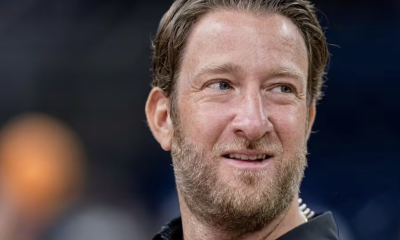
 19th Hole1 week ago
19th Hole1 week agoDave Portnoy places monstrous outright bet for the 2024 Masters
-
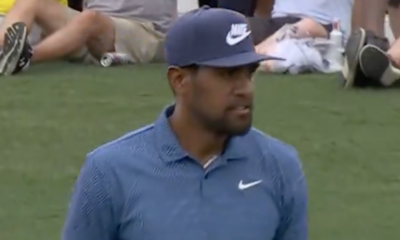
 19th Hole2 weeks ago
19th Hole2 weeks agoThings got heated at the Houston Open between Tony Finau and Alejandro Tosti. Here’s why
-
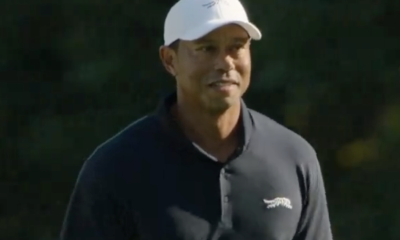
 19th Hole1 week ago
19th Hole1 week agoTiger Woods arrives at 2024 Masters equipped with a putter that may surprise you
-
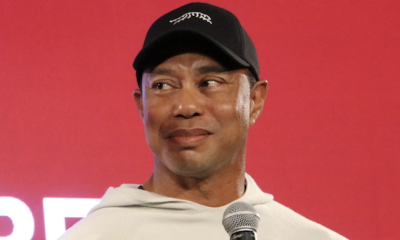
 19th Hole2 weeks ago
19th Hole2 weeks agoReport: Tiger Woods has ‘eliminated sex’ in preparation for the 2024 Masters
-
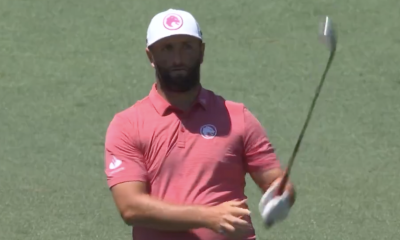
 19th Hole4 days ago
19th Hole4 days agoTwo star names reportedly blanked Jon Rahm all week at the Masters
-
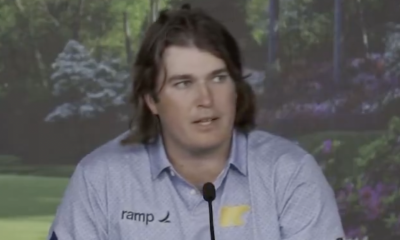
 19th Hole3 days ago
19th Hole3 days agoNeal Shipley presser ends in awkward fashion after reporter claims Tiger handed him note on 8th fairway
-
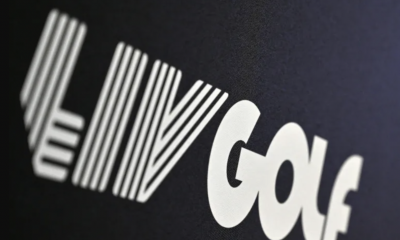
 19th Hole2 days ago
19th Hole2 days agoReport: LIV Golf identifies latest star name they hope to sign to breakaway tour
-
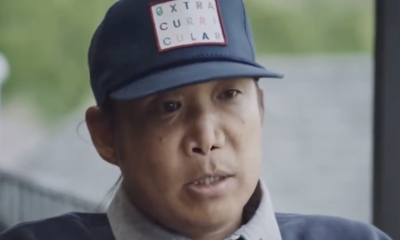
 19th Hole2 weeks ago
19th Hole2 weeks agoAddiction, spinal fusion, and scam artists – Everything Anthony Kim revealed in candid interview with David Feherty



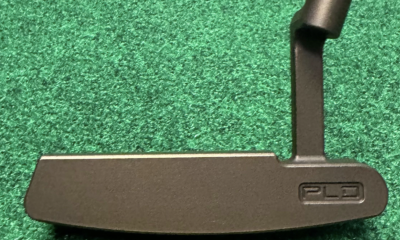

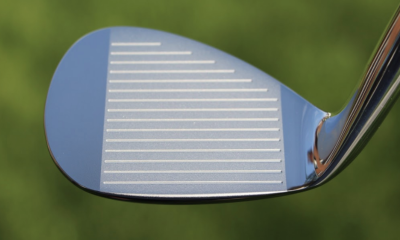



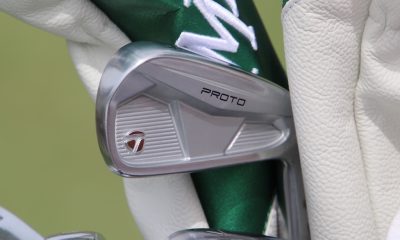



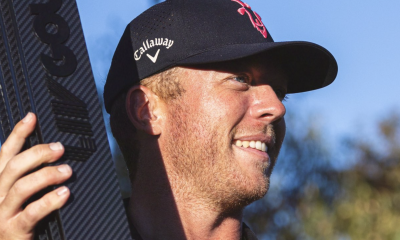









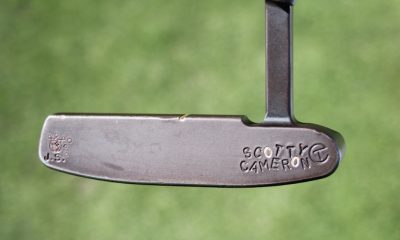

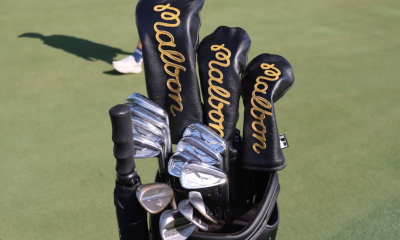

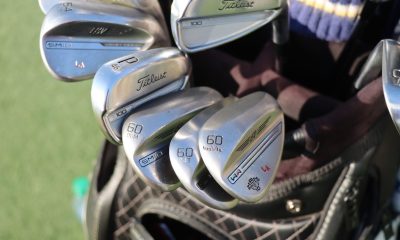

Jnak97
Apr 14, 2020 at 3:29 pm
I second the idea of doing another follow up article. Though, since your last article shows Mr. Scratch as a 73ish scoring average, maybe we could compare the single digit to someone that is averaging 1 or 2 under par. So I guess a +1 or +2 handicap would make a more informative comparison. We already have the stats for a 9 and 0 handicap based on this article and your previous, but it would be nice to have a reference for how to break par!
John Stafford
Mar 30, 2020 at 8:53 pm
Great analysis. I’ve learned (as a 20 handicapper) that I don’t need to hit the ball any longer (or even that much straighter) to be a 10 handicapper. All I need to do is take my best 9 holes and do it for 15 holes. No penalties. Quit using driver and switch to 3 wood at first sign of trouble (most holes only give you 0.2 strokes or so advantage with driver, one penalty outweighs the entire round). No muffed irons, no muffed chips, don’t hit into sand traps except with long irons. Aim for 2 putts instead of the cup. Wedge forward 70 yards from trouble vs. a low probability 150+ yard shot. If only my body wasn’t breaking down as I’m getting so much smarter.
Peter Sanders
Apr 3, 2020 at 10:38 am
Well done John, you solved the puzzle on your own just as I did years ago.
Chris G.
Mar 29, 2020 at 1:45 am
Is it possible to get the statistics to go from Mr. 9 to Mr. Scratch?
pls don’t make me wait 4 yrs, I could be an 18 by then
Peter Sanders
Mar 29, 2020 at 11:16 am
Chris,
Certainly possible. I discussed with the Editor following up with 5 handicap to Scratch. IF, this article were well received.
At the risk of sounding self-serving… If you subscribe to ShotByShot.com, you can select the lower handicap “Target” and the system will guide you to where you want to go. I suggest starting with the 6-9 Target range. When you get there, 4-5 and on down to 0-2 and even lower.
Thanks for your question and please let me know how you do.
Chris G.
Mar 29, 2020 at 12:05 pm
Thank you for the response Peter.
when my expendable income returns, I will give it a shot
Peter Sanders
Mar 30, 2020 at 10:09 am
I understand! Let’s hope it is still golf season!
Peter Sanders
Mar 30, 2020 at 10:10 am
Chris,
Are you somewhere where you can play now?
Chris G.
Mar 30, 2020 at 12:45 pm
The short answer is no. There is a golf course 1 hour away from me that is open, but I am only driving to work and the store. I rode my bike to my local muni but they are closed for now.
Bob Jones
Mar 27, 2020 at 10:15 am
I did just this. I did it by learning how to hit the ball straight, getting VERY good at approach putting and chipping, and learning how to play the game. There were other things, too, like learning how to hit from uneven lies, fairway bunkers, rough, greenside bunkers, chipping from strange places around the green, so I was seldom at a loss for how to stay on offense from challenging spots, but it was mainly those first three things.
Peter Sanders
Mar 28, 2020 at 10:52 am
Thanks Bob! Sounds like you worked hard and figured it out on your own. Well done!
Peter Sanders
Mar 27, 2020 at 9:50 am
I’m with you 100% Jack! My long time friends and I, that used to relish the challenge from the back tees, now unabashedly pass them and walk proudly to the Sr./forward tees. The game is still as fun and competitive!
Jack Nash
Mar 27, 2020 at 9:27 am
Great article
I haven’t used this tech language per say but over the years I’ve managed to play smarter. Getting older, having injuries and losing distance has taught me to use the right club(more club) more often and miss it on the proper side. Oh, and playing it forward makes the game fun again. If it’s feeling like work, you’re on the wrong tee box.